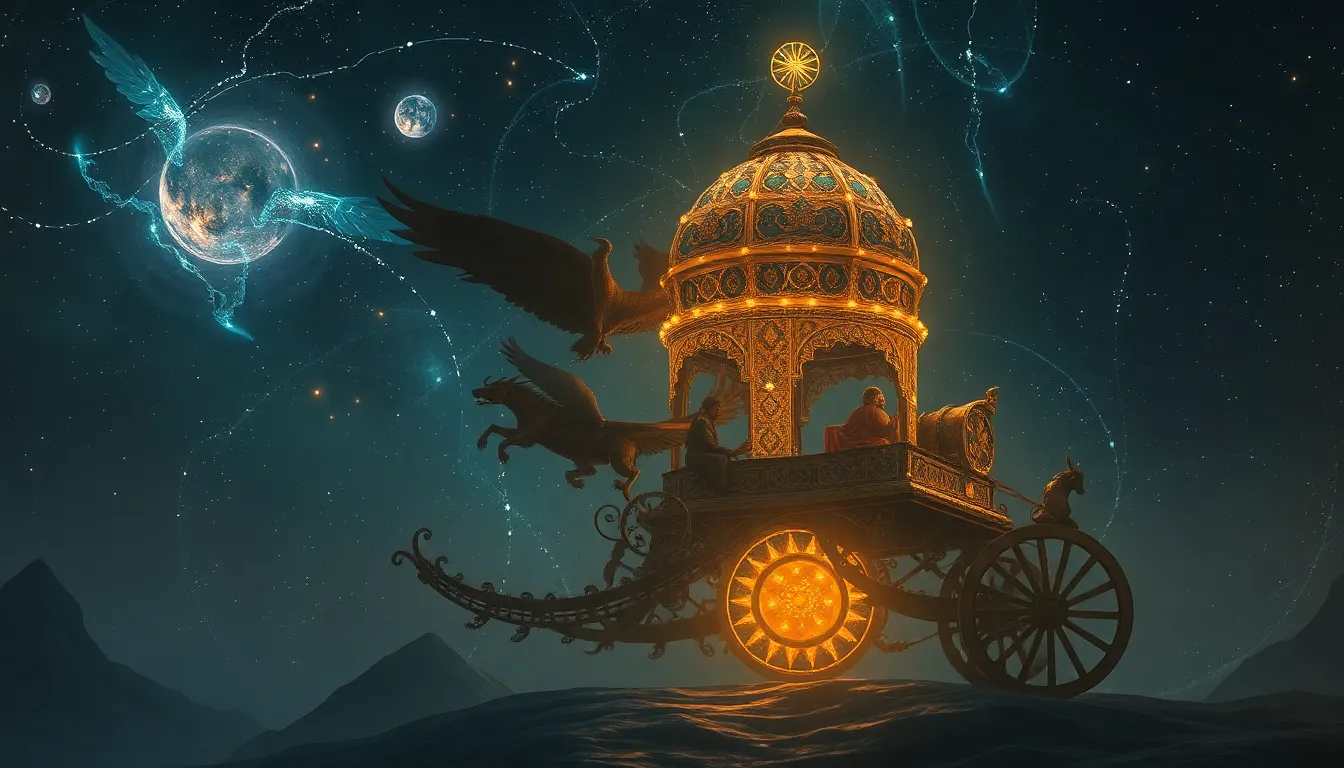The Firebird’s Dance: Slavic Rituals and the Myth’s Power
I. Introduction
The Firebird is a captivating figure in Slavic folklore, a mythical creature that embodies beauty, magic, and transformation. Its enchanting tales have been passed down through generations, often woven into the very fabric of Slavic culture. The Firebird holds not only a place in stories but also a significant role in cultural rituals, symbolizing the deep connection between mythology and communal practices.
This article aims to explore the origins, symbolism, rituals, and contemporary relevance of the Firebird myth. Readers will gain insight into how this legendary creature continues to inspire and impact Slavic identity, as well as the broader human experience.
II. The Origins of the Firebird Myth
To understand the Firebird, we must first delve into the historical context of Slavic mythology. Rooted in ancient beliefs and traditions, Slavic folklore is rich with various mythical creatures and stories that reflect the values and experiences of the people.
The Firebird’s character has evolved over time, originating from early Slavic tales where it was often depicted as a magical bird that could grant wishes or bring fortune. As folklore developed, the Firebird became more complex, embodying themes of conflict and resolution, often appearing as a catalyst for change in the stories of heroes.
When comparing the Firebird to other mythological birds, such as the Phoenix in Greek mythology or the Garuda in Hindu tradition, we see shared themes of rebirth and transformation. Each culture presents its own interpretation of these themes, yet the underlying messages resonate universally.
III. The Symbolism of the Firebird
The Firebird is a powerful symbol representing beauty, freedom, and transformation. Its radiant feathers and mystical presence are often described as mesmerizing, capturing the essence of the unattainable. This imagery evokes a sense of longing and aspiration, as the Firebird becomes a metaphor for the pursuit of one’s dreams.
Furthermore, the Firebird serves as a harbinger of change and fortune. In many tales, encountering the Firebird leads to a series of events that alter the protagonist’s fate. This connection to change highlights the unpredictability of life and the potential for new beginnings.
The themes of light versus darkness are also prevalent in the Firebird legend. The Firebird, often associated with light, contrasts sharply with dark forces that may seek to capture or control it. This duality represents the eternal struggle between good and evil, a central theme in many mythologies.
IV. Rituals Associated with the Firebird
Traditional Slavic rituals involving the Firebird are rich in symbolism and cultural significance. These rituals often celebrate the changing seasons, fertility, and the cycle of life. The Firebird is invoked to bless the community with prosperity and protection.
Dance plays a crucial role in these rituals, serving as a means of connecting with the divine. The movements in these dances mimic the flight of the Firebird, representing freedom and the aspiration to rise above earthly concerns. The accompanying music, often featuring traditional instruments, enhances the spiritual experience, creating a transcendent atmosphere.
Symbolic meanings behind these ritualistic movements include:
- Expressing gratitude for nature’s bounty
- Seeking guidance and protection from the Firebird
- Representing the cycle of life and death
V. The Firebird in Contemporary Culture
The Firebird has found its way into contemporary culture through various adaptations in literature, art, and theater. Notable works include Igor Stravinsky’s ballet The Firebird, which has introduced the myth to new audiences and showcased its emotional depth and complexity.
In modern Slavic identity, the Firebird serves as a cultural touchstone, reminding communities of their rich heritage and shared stories. Festivals and celebrations often feature the Firebird, reinforcing its role as a symbol of unity and cultural pride.
Preservation of the myth is achieved through:
- Community festivals celebrating Slavic traditions
- Educational programs focusing on folklore
- Artistic expressions that reinterpret the Firebird legend
VI. The Psychological and Spiritual Impact of the Myth
The Firebird acts as a source of inspiration and empowerment for many. Its story encourages individuals to embrace their potential for transformation, motivating them to pursue their dreams despite obstacles.
Moreover, the connection between the Firebird myth and personal transformation is profound. Many people find solace in the idea that, like the Firebird, they can rise from challenges and emerge stronger, symbolizing hope and renewal.
The role of collective memory in cultural identity is also significant. The Firebird myth is not just an individual story; it is a shared narrative that binds communities together, fostering a sense of belonging and continuity.
VII. Comparative Analysis with Other Myths
When examining the Firebird alongside other mythological birds, we uncover fascinating similarities. For instance, the Phoenix, which rises from its ashes, shares the theme of rebirth, while the Garuda represents strength and protection in Hinduism.
These universal themes present in the Firebird myth reveal insights into the human experience, illustrating our shared struggles and aspirations across cultures. Myths often serve as mirrors reflecting our hopes, fears, and desires, transcending time and geography.
VIII. Conclusion
In conclusion, the Firebird holds a significant place in Slavic culture, embodying themes of beauty, transformation, and hope. Its enduring power as a myth and a ritualistic symbol resonates in contemporary society, reminding us of the importance of storytelling and cultural heritage.
As we explore and engage with Slavic folklore, we connect with the deeper truths of our shared humanity. The call to action is clear: let us embrace these myths and rituals, preserving them for future generations while drawing inspiration from their timeless wisdom.



